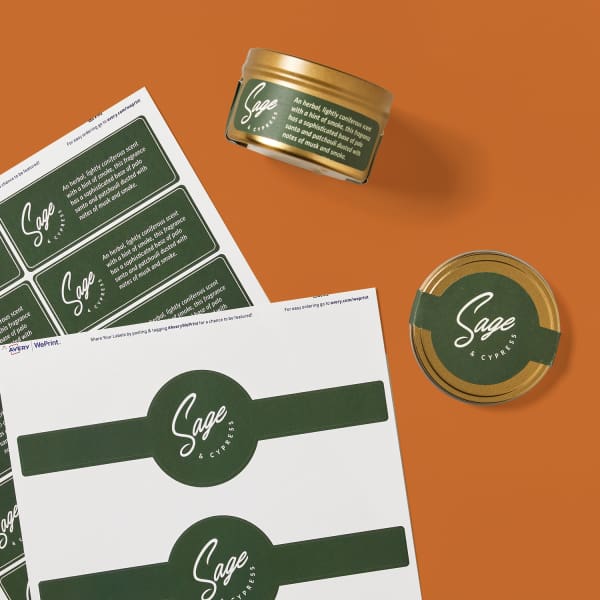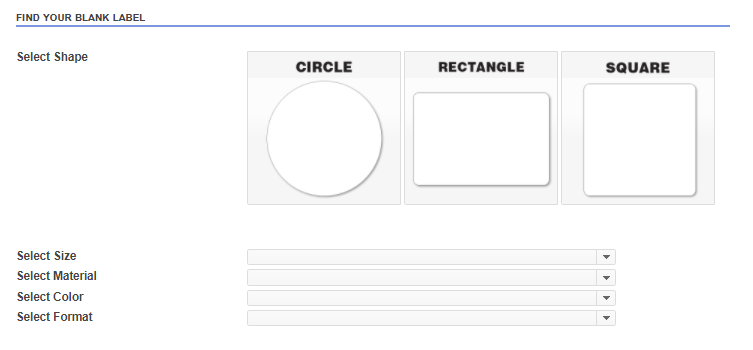Understanding How Blank Labels Job to Enhance Your Labeling Experience
Understanding the mechanics of blank labels is vital for optimizing your labeling techniques across different contexts. To fully understand how these labels can transform your processes, one need to take into consideration the various types offered and the myriad ways they can be personalized to match certain requirements.

Advantages of Utilizing Blank Labels
Blank labels offer a versatile remedy for various classifying requirements, making them invaluable in both individual and specialist settings. Their flexibility enables individuals to create tailored labels tailored to details demands, improving organizational effectiveness. Whether made use of in home workplaces, retail atmospheres, or industrial applications, blank labels promote the identification and classification of products, files, and individual things.
One considerable benefit of blank labels is their cost-effectiveness. By allowing individuals to print just the labels they require, waste is reduced, and stock management becomes extra workable. Additionally, blank labels work with numerous printing techniques, including inkjet and printer, making them easily accessible for various users.

In addition, the usage of blank labels streamlines the procedure of upgrading info, as users can easily publish new labels to change outdated ones, ensuring that all items and papers are accurately classified. Overall, blank labels offer a sensible and reliable labeling remedy for varied applications.
Types of Blank Labels Available
What choices are available when it comes to blank labels? Blank labels come in a variety of kinds, each matched for different applications and preferences.
An additional popular alternative is synthetic labels, typically made from materials like polyester or plastic. These labels are understood for their longevity and resistance to water, chemicals, and tearing, making them appropriate for harsh settings. They are generally utilized in commercial settings or for labeling products that might be subjected to wetness.
Additionally, there are thermal transfer labels, which call for a printer that uses warmth to transfer ink onto the tag surface. These labels are preferred for their high-grade print and durability.
Finally, specialized labels deal with details needs, such as removable labels for temporary use or high-temperature labels for severe conditions. Understanding these options allows customers to pick the read what he said most suitable blank tag for their unique labeling needs.
Modification Options for Labels
A vast array of customization options is offered for labels, allowing customers to customize them to specific needs and branding demands. Individuals can pick from numerous dimensions, shapes, and materials to make sure that the labels efficiently fit their desired purpose. Usual products include paper, polyester, and plastic, each providing various degrees of durability and aesthetic allure.
Shade alternatives play a find more vital duty in personalization, enabling brands to preserve uniformity with their business identity. Individuals can select from a spectrum of colors or perhaps choose customized printing to match certain branding elements. Additionally, labels can be printed with distinct designs, logo designs, and message, enhancing brand name acknowledgment and aesthetic influence.
An additional important facet is the choice of adhesive. Tags can be developed with permanent, detachable, or repositionable adhesives, depending on the application needs. This flexibility enables effective labeling services throughout various settings, from retail to industrial settings.

Tips for Effective Labeling
Effective labeling goes beyond modification; it likewise entails strategic considerations that boost performance and communication. To achieve effective labeling, begin by plainly specifying the function of each label.
Next, focus on exposure by selecting proper shades and font styles. High contrast in between message and history boosts readability, while bigger font styles help with quick identification. Additionally, make sure that labels are placed in a consistent and rational manner, making it simpler for individuals to find and translate information.
Take into consideration the toughness of labels also. Pick materials matched for the specific environment where the labels will certainly be utilized, whether it be inside your home or outdoors. Water resistant or tear-resistant alternatives might be required depending upon the context.
Last but not least, on a regular basis evaluation and upgrade your labels to reflect any changes in information or usage. This aggressive approach not only maintains quality however additionally stays clear of complication in time. By following these suggestions, you can take full advantage of the performance of your labeling efforts, ensuring they offer their desired objective successfully.
Applications of Blank Labels
Blank labels supply various applications across various industries, making them a very useful tool for company and communication. These versatile labels are frequently made use of in stockrooms for stock management, enabling businesses to easily recognize and track items. By using blank labels to storage containers, racks, or pallets, firms can simplify their procedures and minimize the likelihood of mistakes.
In the health care industry, blank labels play a crucial role in classifying drugs and medical products, making sure appropriate identification and usage. Adjustable labels can consist of essential info such as dosage, expiration days, and patient information, boosting security and conformity.
In retail, blank labels aid in prices check here products, providing promos, or identifying rack locations, which ultimately boosts the customer experience. They enable fast updates to pricing or product info without the demand for pre-printed labels.
In addition, blank labels are useful for individual use, such as arranging home workplaces, crafting, or classifying food containers. Their versatility enables people to create tailored services that fulfill particular needs. Generally, the applications of blank labels are substantial, emphasizing their relevance in fostering performance and clarity in different settings.
Verdict
In conclusion, blank labels offer a flexible and efficient option for different identifying needs. Eventually, the combination of blank labels right into functional processes adds to improved performance, making them a vital source for both personal and expert usage.
 Kel Mitchell Then & Now!
Kel Mitchell Then & Now! Hailie Jade Scott Mathers Then & Now!
Hailie Jade Scott Mathers Then & Now! Loni Anderson Then & Now!
Loni Anderson Then & Now! Raquel Welch Then & Now!
Raquel Welch Then & Now! Barbara Eden Then & Now!
Barbara Eden Then & Now!